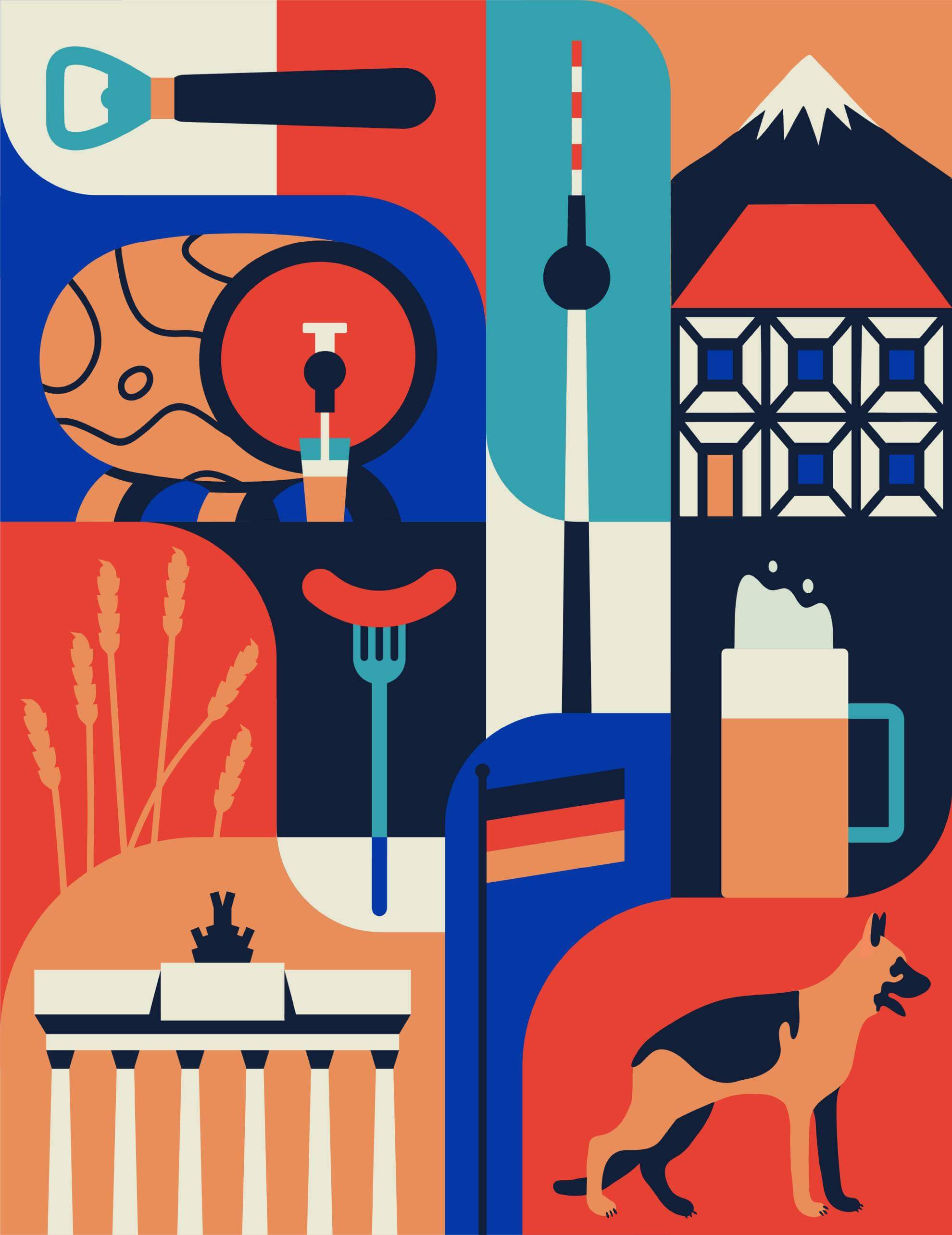All major European tourist destination are filled with German tourists. Not young ones, but mostly the elderly, in groups, walking the streets slowly, driven by their guide talking to them through headphones. This situation gets worse in the mountains, where every European camping spot and hiking route is invaded by German tourists of any age, fully equipped, moreso than any Himalayan explorer has ever had.
Germany doesn’t experience the same invasion, so I (an Italian) decided to take my revenge on the German invasion and visit Germany’s hidden gems on my own vacation.
LÜNEBURGER HEIDE
Probably the best way to visit Germany is going from north to south, starting from the former Prussia, the authentic Germany, the cold and northern one, where the highest point is the Wildeser Berg, a mountain that dominates the heath terrain of the Lüneburg area with its staggering 555 foot elevation. An easy way for locals to fool tourists is to tell them they’re about to see the biggest mountain in northern Germany, then driving them to it and seeing their reaction. Even though the mountain is not much of a beauty, the landscape is famous for its heath, a plant that had been widespread throughout the country during the middle ages, but now present mostly here. The heath creates an especially romantic atmosphere when in bloom, as its violet color when hit by the sun has persuaded many couples to pay for benches named after them, as a special spot to shelter when seeking intimacy.
HAMBURG
It’s striking that this region, where nature dominates, is less than 40 miles from Hamburg, the third biggest European port, the engine of German shipping, where cement covers the rivers of the Elbe for as far as the eyes can see. Blue cranes, seen from the panoramic view of the recently built Philharmonic building, dominate one side of the river, while the other is covered by skyscrapers, newly created neighborhoods and a few churches that survived WW II bombings.
It’s like seeing two cities divided by just a river, but united by the showcase of German industrial and economical power. You can see here the export giant Trump tried to obstruct with his protectionist policies.
Inside the cities you see a less scary Germany. The red light district is where pleasure, culture, fun and art intertwine themselves into a street where a brothel, a Catholic Church run by nuns, a strip-club and the Cavern Club (where the Beatles paid their dues) coexist, creating an impressive mosaic.
There’s no surprise then to discover that such a diverse reality is a strong fortress of the left, where even the local football team, St Pauli, has far-left hooligans, something you don’t expect.
HARZ MOUNTAINS
If you happen to be agoraphobic or to hate the smell coming from the Fischbrötchen, a local sandwich with smoked or fried fish inside, it could be worthwhile to take the train in the Hauptbahnhof and heading this time to actual mountains, the Harz.
The Harz is a range across three Land (Germany’s main administrative subdivision)—Lower Saxony, Thuringia and Saxe-Anhalt. Lower Saxony was in communist East Germany andprobably the only region where the eastern and former Red area is richer and more beautiful than the western one, thanks to the money that arrived after the country’s reunification.
Wernigerode is the main Harz center in Saxe-Anhalt, it has wooden traditional houses, streets characterized by the typical German cleanliness, where older women with dyed hair sample good ice cream in the several Eiscafé Venezia, an Italian trademark that has conquered every single little town in the country. But those ladies are not the highlight, that honor belongs to the hiking routes. Here pretty much no one speaks English, unlike the rest of cosmopolitan Germany. To go to the main heights you can skip the walking and take the local vapor-driven train, but then you’d lose the experience of seeing canyons, natural caves and the forests where the modern science of Forestry was founded.
The Harz is also a place where you can see climate change gave a strong hit to the environment. Most of the trees here are not native.
The temperature rise of has allowed bacteria to flourish and some are actually killing those trees, so extended dead forests are a pretty common thing to see as well. Their death could allow the rebirth of local vegetation, but that view is pretty harsh, as it is in a way to see the strong nostalgia here for the former communist Democratic Republic of Germany.
The latter can be seen both officially, in the DDR Museum in Thale, and unofficially, in shops, where beer, pins, postcards, souvenirs of any time with the former Republic’s symbols are sold. And, it must be remembered, the buyers are mostly German, due to the lack of foreign tourists. Here locals regret the welfare state and community sense socialism gave them and the void individualistic capitalist hegemony imposed upon them afterward.
BAMBERG
After some hiking it’s good to rest, partly because Harz Germans can drive you crazy telling you about animals would speak to you in order to save their lives. These are the kinds of stories hotel owners propagate in order to build their own businesses with more tourists. After similar shocks to the brain some alcohol may be needed and Bamberg, in Bavaria, southern Germany, is a special provider.
Here beers is stored in caves in the surrounding mountains and then sold to people in a glass never smaller than a half liter. Smaller sizes are only allowed only after several big glasses, to officially end the drinking session.
The exotic beer in Bamberg is a smoked version that, according to anyone not living here, tastes like cigarettes due to the smoking process it goes through.
Anyway, beer is not necessary to enjoy the city, whose architectural heritage is protected by UNESCO. Bamberg was a city once ruled by Catholic bishops, that decorated the city with Baroque style government buildings, like the old town hall, completely built on an island in the middle of many bridges giving the visitor strong Venezia vibes. But in the city there’s Gothic architecture as well, like the Imperial Cathedral, a church dominating the city, where Holy Roman Emperor Henry II is buried, surrounded by bats freely haunting the dome and the naves of the building.
The region surrounding Bamberg is full of history, being the birthplace of many of Europe’s most renowned royal families, including the UK’s, Belgium’s, Portugal’s among others. Indeed, castles are a usual sight while leaving Bamberg, and they’re literally of any possible style, from Disney to a Middle Age siege.
Germany proves here and in all the places aforementioned to be an interesting and staggering country to discover. But the internet is probably not the best way to get complete information on what to do or see.
Germans have in their spirit the will to explore and walk a lot, to make out of a small mountains major tourist attractions, to not stop just at bigger spots, but making the most out of anything historical.
So just trust them as guides and you will find that, even though you’ll be deep in butter all the time while eating, and you’ll be fooled about the highest mountain in the north, you will end up with an unforgettable experience.
Author
-

Dario Pio Muccilli is the Star-Revue’s Italian correspondent, based in Turin. Email him at muccillidariopio@gmail.com
View all posts
Dario Pio Muccilli is the Star-Revue’s Italian correspondent, based in Turin. Email him at muccillidariopio@gmail.com










